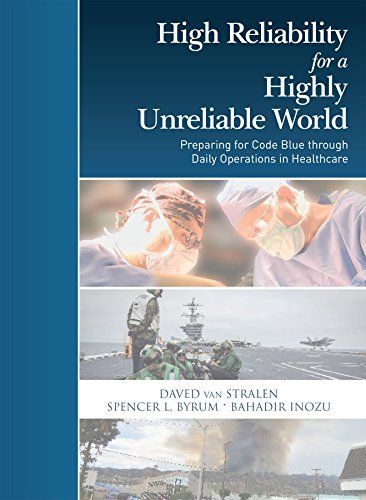How to think and operate
when the rules around you have changed and
the internal logic of the system is lost
HRO is a way of thinking and a way of organizing.
Steps to understand HRO
The basics explained.
Tactical Improvisation: San Bernardino City Fire Department
Please feel free to download and read the following PDF submitted regarding the "After-Action/ Comprehensive Analysis of the Active Shooter Incident Response by the San Bernardino City Fire Department." The full 117-page official report on the attack—good reading as a training document—can be accessed free of charge with a click of the download button below.
High Reliability for a Highly Unreliable World: Preparing for Code Blue through Daily Operations in Healthcare
Authors Daved van Stralen, MD, FAAP; Spencer L. Byrum; and Bahadir Inozu, PhD, are experts in the art and science of High Reliability Organizing (HRO). They have, in their diverse and successful careers, applied the fundamentals of the HRO system to aviation, healthcare, public safety, manufacturing, and a multitude of other industries. Among these industries, HRO’s applications in healthcare have been garnering the most attention recently.
In this new guide to the principles of HRO, the authors explore its uses in healthcare and list the many ways industry leadership can benefit from its implementation. In addition to HRO’s many benefits, this new guide also explores:
- The five HRO principles
- HRO in healthcare environments
- The problems HRO solves
- Boyd’s OODA loop
- Decision making in healthcare
- Threat responses
- Leadership models
- Organization culture, andmany other important fundamentals
.
HRO is an effective way an organization can respond to crisis, chaos, and adversity. It gives leadership, management, and all levels of the organization a way of processing challenges and overcoming them as a single unit.
With the help of these industry experts, discover how HRO helps you learn and grow as team member, manager, and leader
'Dirt bike riding in the desert. I asked if he had ever driven up a box canyon. "Yes," he answered. "Why?"
HRO is a way of THINKING and a way of ORGANIZING.
"A little learning is a dangerous thing; drink deep, or taste not the Pierian spring: there shallow draughts intoxicate the brain, and
drinking largely sobers us again."
“What is learned today must explain yesterday or be used tomorrow."
I will only teach what will help.










